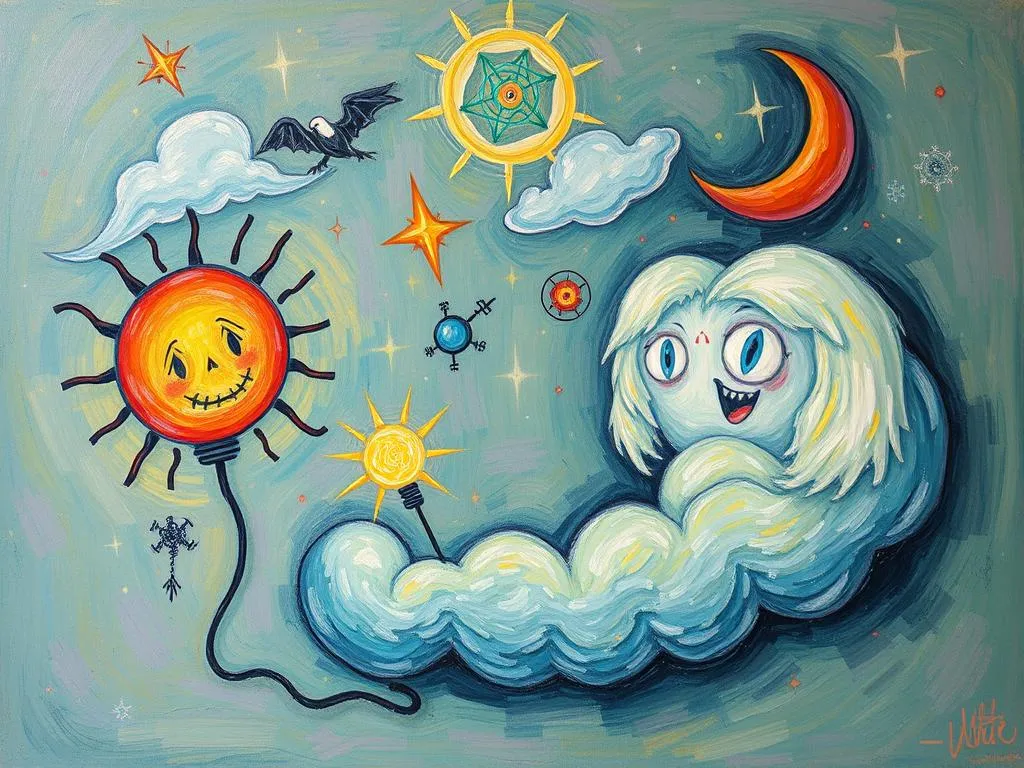
Have you ever woken up in a cold sweat, your heart racing from a nightmare that felt all too real? Bad dreams can leave us feeling shaken, confused, or even fearful of sleep itself. They often come bearing unsettling symbols and themes that tug at the strings of our subconscious, revealing anxieties that we may not fully comprehend. Rather than dismissing these dreams as mere figments of our imagination, it can be incredibly beneficial to delve into their meanings, drawing on cultural insights, psychological perspectives, and personal reflections.
In this article, we’ll explore some of the most common bad dream symbols, examine experiences that many of us can relate to, and consider how these dreams can serve as catalysts for personal growth. By the end, you’ll have a deeper understanding of your subconscious mind and the shadows it casts.
Dream Symbols: Peering into the Dark
Dreams often communicate through symbols, which can vary based on cultural backgrounds and personal experiences. Some symbols are universally recognized, while others might resonate more deeply depending on your individual context. Here are a few common bad dream symbols and their potential meanings.
-
Falling: This is one of the most prevalent symbols in nightmares. To dream of falling can signify feelings of loss of control or insecurity in waking life. Psychologically, it can represent a fear of failure or an overwhelming sense of helplessness. Culturally, many societies interpret falling dreams as a warning to evaluate your life choices.
-
Being Chased: To dream of being pursued often reflects unresolved issues or fears that you are trying to evade. This symbol can indicate a desire to escape from responsibilities or confrontations. From a psychological standpoint, it suggests that you may not be addressing important aspects of your life, pushing them away instead of facing them head-on.
-
Death: Dreams about death can be particularly distressing, but they don’t always have a literal interpretation. Instead, they may symbolize the end of a phase or a significant transformation. Culturally, death in dreams is often viewed as a transition, suggesting that something old is making way for something new. This can be a potent opportunity for reevaluation and renewal.
-
Monsters or Creatures: Encountering frightening beings in dreams can signify internal fears or feelings of inadequacy. These monstrous figures often represent aspects of ourselves that we find difficult to accept. Psychologically, they can embody unresolved trauma or emotional pain that needs to be confronted rather than ignored.
-
Natural Disasters: Dreams involving floods, earthquakes, or tornadoes can symbolize overwhelming emotions or situations in your life. These dreams often reflect feelings of chaos, unpredictability, or a fear of losing control. Culturally, natural disasters in dreams may represent a collective fear or anxiety prevalent in society at a given time.
Understanding these symbols can offer a powerful lens through which to view your fears and anxieties. They are not merely random occurrences but rather meaningful messages from your subconscious that deserve your attention.
Shadows of Experience: Relatable Nightmares
Now that we’ve explored some of the symbols present in bad dreams, let’s delve into specific scenarios that many people have experienced. These vignettes can help you identify your own feelings and reactions when confronted with similar situations.
-
The Exam You Didn’t Study For: Picture this: you’re sitting in a classroom, and the exam paper in front of you is filled with questions you’ve never seen before. This dream often arises during stressful periods, reflecting feelings of inadequacy or fear of judgment. It’s a manifestation of performance anxiety, suggesting that you may be feeling unprepared for challenges in your waking life.
-
Lost in an Unknown Place: Imagine wandering through a maze of unfamiliar streets, frantically searching for a way out. This scenario often symbolizes feelings of confusion or a lack of direction. It can signify that you’re grappling with significant life changes or decisions, leaving you feeling disoriented and unsure of your path.
-
Being Late: In this dream, you may find yourself rushing to a crucial event—perhaps a wedding or an important meeting—but no matter how fast you run, you can’t seem to make it on time. This reflects the pressures of time management and the anxiety of missed opportunities. It highlights fears of not living up to expectations, whether they are self-imposed or external.
-
Public Humiliation: Picture yourself standing in front of a crowd, suddenly realizing you’re in your pajamas or that you’ve forgotten your lines in a performance. This common nightmare underscores the fear of vulnerability and social judgment. It often arises when one is facing new social situations or feeling insecure about their self-image.
-
Trapped or Unable to Move: In this scenario, you might find yourself paralyzed in bed or unable to scream for help. This dream can represent feelings of being overwhelmed or confined in your waking life. It reflects a sense of powerlessness, whether due to external pressures or internal struggles.
By recognizing these experiences, you can begin to connect with the underlying emotions they provoke. Dreams serve as mirrors, reflecting the anxieties, pressures, and unresolved conflicts that shape our daily lives.
Transforming Nightmares into Growth: Pathways to Understanding
Now that you’ve identified some negative dream symbols and relatable experiences, it’s time to consider how these nocturnal narratives can inspire personal growth. Rather than succumbing to fear, you can approach your dreams with curiosity and openness, using them as tools for self-discovery.
-
Journaling Your Dreams: Keeping a dream journal can be a transformative practice. Write down your dreams as soon as you wake up—capture the symbols, emotions, and any lingering feelings. Over time, you’ll start to notice patterns and themes that can lead to deeper insights about your waking life.
-
Mindfulness and Reflection: Engage in mindfulness exercises to help you approach your dreams without fear. Reflect on what each bad dream might be telling you about your life circumstances. Ask yourself what unresolved issues or emotions might be manifesting in your dreams. This practice can help you cultivate a sense of awareness that extends beyond sleep.
-
Confront Your Fears: Often, the key to transforming nightmares lies in confronting the very fears they represent. If you dream of being chased, consider what you might be avoiding in your life. By facing these fears, whether through conversation, therapy, or creative expression, you can begin to reclaim your power.
-
Seek Support: Sometimes, sharing your dreams with a trusted friend or therapist can provide additional perspectives and insights. Discussing your dreams can help you process the emotions they evoke and uncover deeper meanings that you might not see on your own.
-
Embrace Change: Remember that bad dreams can signal the end of one chapter and the beginning of another. They serve as reminders that change is often necessary for personal growth. Embrace the idea that transformation is possible, and allow yourself to explore new paths and possibilities.
By approaching your nightmares as opportunities for growth, you empower yourself to engage with the complexities of your own psyche. You’ll find that the very dreams that once filled you with dread can become sources of wisdom and understanding.
As you navigate the labyrinth of your subconscious, keep in mind that bad dreams are not merely the manifestations of fear but rather invitations to explore your inner world. Each symbol holds a story, each experience offers a lesson, and every moment of discomfort presents an opportunity for growth.
What if, instead of fearing the darkness of your dreams, you chose to embrace it? In doing so, you may uncover not just the shadows that haunt you, but also the light that guides you toward deeper self-awareness and transformation.







